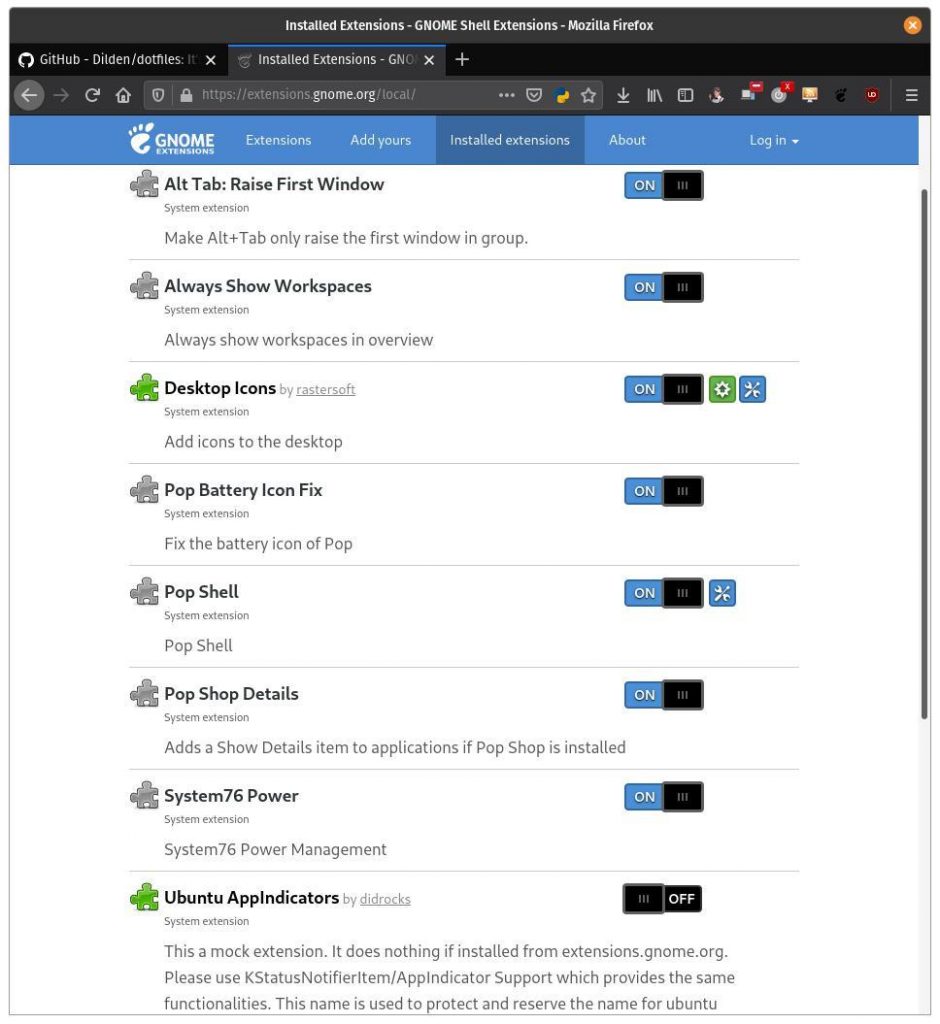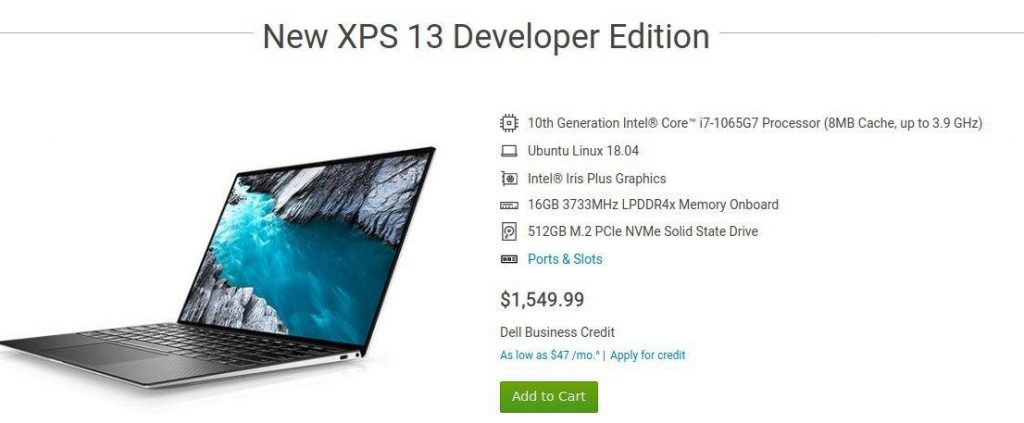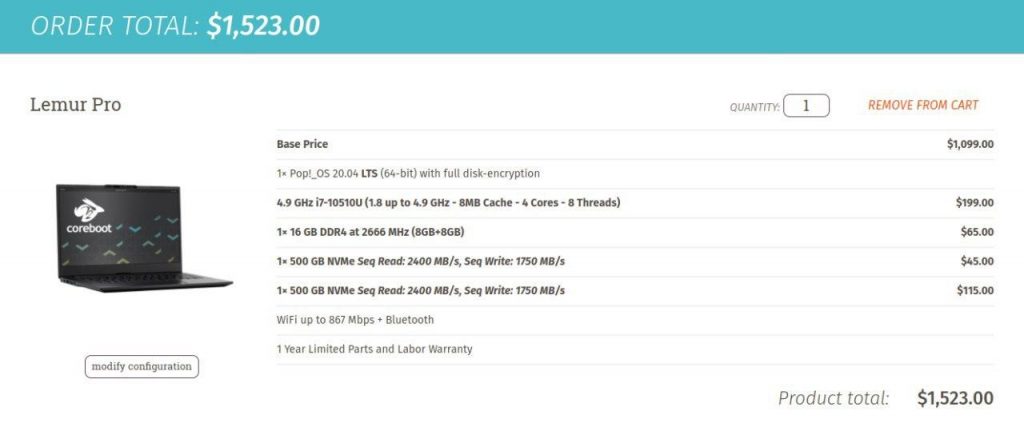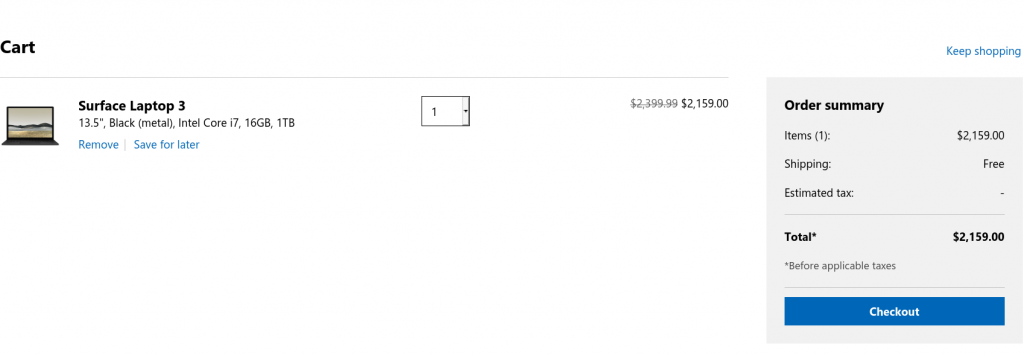I’ve been in the market for a new laptop since the battery died on my secondhand Samsung. Even the replacement (aftermarket) batteries I found for it would only give me 2 hours of usage for the first month and then drastically drop off to 45 minutes. Having to hunt for an outlet everywhere I took it was so much of a nuisance that I couldn’t comfortably use it in my own living room.
So when I saw that System76 announced they were releasing a new laptop that claimed 14 hours of battery life, my mind was made up. I was going to have that machine.
Which brings us to this post. I’ve taken a new approach in an effort to brag share my first impressions with the world by creating videos. I’m well aware that the video quality isn’t great and that’s because I don’t know the first thing about video recording, editing, sound, light, etc. Also, I’m lazy.
Unboxing
Disassembly
System76 is kind enough to provide repair manuals but it’s really simple to get inside and gain access to various components.
Keyboard + Trackpad
The backlit keyboard has 4 different brightness settings as well as the capability of being shut off. The only real complaint I’ve had about the keyboard is that the space bar is so soft that I sometimes wonder if I actually hit it. The arrow keys are quite close together but if you’re doing most of your writing in Vim (I am), it’s not that big of a deal. The trackpad took some getting used to since I’m so used to having physical clickers but the two-fingered tap for right click is has worked really well.
Display
Being such a small form factor with an HD screen, it’s actually quite difficult to read some text. It may just be that my glasses prescription needs to be updated (it desperately does) but I kept finding myself having to bring the device closer to me so I could read it. I’m probably just getting old. In any case, it was an easy fix in the Pop Shell/GNOME accessibility settings. I’ve also turned up the interface size to 125% on applications like Telegram and increased the font size in Firefox to make it easier to read at a comfortable distance.
Battery
Having only had the laptop for a day, there’s not really much that I can say about the battery life yet except that it’s a huge step up for me. I’ve put around 6 hours of actual usage onto and it still has 55% battery left with an estimated 7 hours. During that time, I’ve updated the firmware, the packages, installed around half of the tools needed to do my day-to-day work, streamed music, written this post, cloned my dotfiles repo, and just played around with it.
Update (5/23/20): After using the Lemur Pro for a couple of weeks now, I’ve been averaging a little over 12 hours of usage. That typically includes running a VM for web development, a chat client, email, a browser with multiple tabs, and Vim. Going from less than 10% battery back to 100% typically takes about 5 hours. The only gripe with charging is that the charging cable is the very short. Fortunately, its simple enough to purchase a longer length of cable to use with the charger.
Pop OS
Pop OS 20.04 really steals the show on this machine. I did not expect to be as excited about it as I currently am. Having tiling functionality baked into GNOME with Vim keybindings really gives you the best parts of window managers like i3-gaps and gnome-shell. It’s easy to move between windows and workspaces. I never really used workspaces in GNOME before because it was just so awkward to drag and drop windows to a new location and get them setup how I wanted them. But with tiling built into the Pop Shell, I can use my trackpad to select a workspace or Super + Ctrl + H, J, K, or L to cycle through them. I’m not sure I’m the best person to do an in depth review of Pop OS so if you’re curious about it, you should read everything System76 has done with it. It works really well. I’ve not tried Regolith Linux but that project seems to attempt to solve similar problems that the Pop Shell has.

Competition
As I said earlier, I did some shopping around before settling on the Lemur Pro. The most obvious competitor is the Dell XPS 13 Developer Edition but when I selected a model with similar specifications to this particular Lemur Pro, I was surprised to find that the Lemur Pro was cheaper than the XPS 13.


Granted, the Dell XPS comes with a higher resolution display but the battery life isn’t nearly what the Lemur Pro is and it doesn’t allow for multiple storage devices. It was a no brainer for me, because I also got to support a smaller US based company that is promoting free software.
I never in a million years would buy a Macbook Pro, but I was curious about the difference in price point and, well, I wasn’t surprised that it clocked in at more than $1000 than the Lemur Pro.

Obviously, Apple devices come with an experience that is fine tuned to their environment but I don’t know if I could justify spending so much when other quality options are available.
I had also considered a Surface Pro but unsurprisingly, it was also prohibitively expensive.

3 month update
After using the Lemur Pro for about 3 months now, I have noticed a few issues. The first and most notable being the Page Up/Page Down keys on the keyboard. Because of how often I use those buttons (default keybinding in GNOME terminal tabs), I find it difficult to correctly get to even the arrow keys. If you’ve got fat fingers, this could be a deal breaker for you.
Secondly, the System76 logo on the laptop is just a sticker, which makes sense when you think in terms of the laptop being a rebranded Clevo device. While some people might think this is a downside, it’s also means you can peel the logo off with a tweezers and some GooGone to get a completely nondescript black laptop.
And finally, I’ve noticed some strange issues with WiFi cutting out after resuming from suspend. This has only happened recently which makes me think it was an update that introduced the problem. I try to keep my systems as up to date as possible, but there’s always a chance that something will break in doing so. Hopefull, System76 can address it soon as this seems to be my number one usability issue so far.
For more reading, checkout what these fine folks had to say:
Beyond The Specs: These 2 New Linux Laptops Aren’t Created Equal
If you have questions about the laptop or would like to add some thoughts, leave a comment or contact me and I’d be happy to chat with you about it.

One reply on “A Brief Introduction to the Lemur Pro by System76”
Great overview Dylan. Looking forward to seeing you post updates about the battery life as you start to use it as your daily driver.